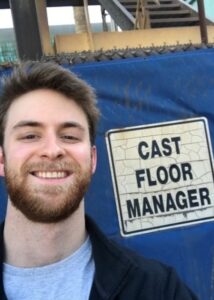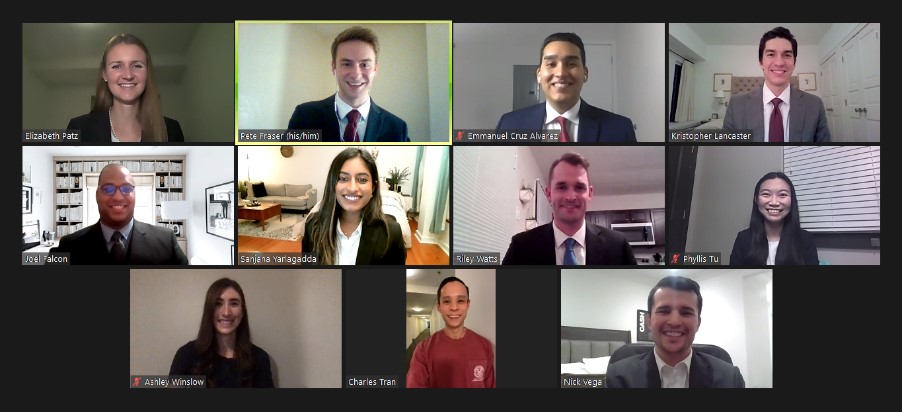Park Perspectives: How to stretch yourself as a leader

Park Perspectives are authored by Johnson’s Park Leadership Fellows.
How does one become a better leader? The question is asked by those who lead high-functioning teams and those who manage dysfunctional groups, by employees and founders, by young students and experienced executives alike. Regardless of title and position, the question of how to improve regularly comes into the minds of leaders because leadership is such a complicated topic of study. There are so many books and opinions and research papers on what good and bad leadership look like that one can easily get lost in the subjective discussion. To compound the issue, when we look up to examples of great leaders, we see an infinite variety in the behaviors that have brought leaders into their powerful positions.
In an effort to analyze the issue from a new angle as Park Fellows, we turn the research microscope around and dive into ourselves to determine our drivers, strengths, weaknesses, and impact on others. Through my individual and group analysis of personal leadership with the Park Leadership Fellows Program, I have been able to determine the key levers that have enabled me to stretch my leadership abilities.
Force yourself out of your comfort zone
No pain, no gain. A key component to leadership is adaptability, a skill honed in uncomfortable situations. My introduction to uncomfortable jobs started when I needed a job in college and a friend of mine recommended that I apply to be an intramural sports referee with him. I didn’t grow up playing sports and being Canadian, I didn’t know the rules of anything besides hockey, but I got the job. The trouble started my first day when I showed up ready to referee a basketball game with flashcards in hand with the definition of a block, hand check, and a charge… Safe to say, my first few months as an intramural basketball, soccer, and volleyball referee were brutal. But the pressure forced me to learn twice as fast as everyone else. I ended up spending three years in the intramural program, eventually leading the training for new referees. Because of that experience, I discovered that even if I started as the absolute worst member of a team, I could eventually work my way to success.

That mindset led me to take a role with US Steel on their Engineering team, where I worked for almost a year until I was offered a promotion to front-line shift manager. At 24, I became the youngest shift manager in the Steel division. The average age of the union steelworker I managed was 45. I dove into the opportunity and came out confident that in any work setting, I am capable of beating the steep learning curve of a new role. In business school, I kept the same mentality and threw myself into a world completely out of my comfort zone, investment banking. The experience has culminated in securing an internship on Wall Street and being elected Co-President of the Old Ezra Finance Club, Johnson’s most prestigious student organization.
When you have the courage to raise your hand for opportunities well outside your comfort zone, you often find twice the growth and come out with twice the stories!
Push your physical, mental, emotional, and spiritual limits
Everyone knows that you don’t run a marathon on a whim. You plan for months and train for weeks, slowly building your mental fortitude and physical stamina. In the same way, to stretch ourselves as leaders, we can’t wake up on Monday and suddenly be a more empathetic boss. We can’t send managers to leadership training and expect results to change the next day. To become better bosses, supervisors, and leaders, we have to slowly stretch ourselves. Stretching happens every day, in short, 20-minute stints, where we barely see any change day-to-day but six months later the team is praising our newfound listening skills. Slow stretching is the type of change a leader should focus on. And in the same way that stretching is a daily exercise, leaders must work to improve their soft and hard skills every day. To improve ourselves, we need to be in good starting shape, and I have always brought my best self to work when I am in a healthy mental, emotional, spiritual, and physical shape.
Learn from others
Jamie Dimon once told the graduating class of Harvard Business School that “you can learn more from speaking to people in 15 minutes than if you spent your life doing something [alone].” One lesson best learned early as a leader is how important conversations with others are in our lifelong learning. There are two huge benefits to learning from others: You can establish stronger relationships with your network by having others help you and you can learn the material from a unique perspective. When you look at a problem from another perspective, you often find that there are much more effective ways to perform tasks and problem solve than you could conceptualize prior to the conversation.
When I was in the mill, I managed 120 men and women, most of whom had never been to college, and some who had never finished high school. I came in with biases that I wouldn’t learn much from these folks and we would have a hard time connecting due to our different backgrounds. Luckily, I could not have been more wrong, because they taught me a million and one lessons on making steel and managing diverse teams of people. When I was starting my company, there were hundreds of times that I had no idea how to move forward, and I could turn to the awesome team I had inside the company and the incredible group of outside advisors I had for guidance.
And now looking forward, I could not be more excited to lead 100+ first-year MBA students through the recruiting process for investment banking, asset management, equity research, and corporate finance because I know I can lean on my excellent network of friends and advisors inside Old Ezra, Johnson, and across Cornell.

So how does one become a better leader? To start, take yourself out of your comfort zone and understand how another part of the world does business. Once there, keep yourself in good shape and show up every day ready to push your limits. And when you become lost, or you just want to see the world through another pair of eyes, strike up a conversation with the people around you. You may not see the daily improvement taking place, but you may look back and surprise yourself with the things you and your teams were able to accomplish.

